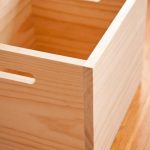Are you wondering how to clean white dots on old woodworking tools? These unsightly blemishes are a common issue for anyone who works with vintage hand tools. Understanding the cause of these white dots is an important first step in effectively restoring your equipment to its former glory. In this article, we will explore the reasons behind the appearance of white dots on old woodworking tools and provide you with a comprehensive guide on how to remove them.
Old woodworking tools are cherished for their craftsmanship and timeless quality. However, over time, these cherished tools can develop white dots that detract from their appearance and functionality. The cause of these white dots is often corrosion or rust that has formed on the metal surfaces of the tools. In some cases, these blemishes may also be attributed to the formation of oxidation or other environmental factors.
Identifying where these white dots have formed on your woodworking tools is essential before attempting any cleaning process. Once you have pinpointed the affected areas, it becomes easier to gather the necessary supplies and properly prepare your equipment for cleaning. Whether it’s your beloved handsaw or antique chisel, knowing where to look for these imperfections will aid in effectively restoring your tools.
Identifying the Affected Areas
When dealing with white dots on old woodworking tools, it’s essential to know where to look in order to effectively address the issue. These white dots are often a result of rust and corrosion that have formed on the metal surfaces of the tools over time. Here are the key areas to inspect for white dots on your woodworking tools:
1. Blade or Cutting Edge: Check the cutting edge of saws, chisels, and planes for any signs of white dots or corrosion.
2. Handles: Inspect the handles of your woodworking tools, as moisture and rust can also affect this part of the tool.
3. Joints and Moving Parts: Take a close look at the joints and moving parts of your tools, as these areas can also develop white dots due to rust accumulation.
It’s important to thoroughly examine each tool, as even small white dots can indicate underlying rust that needs to be addressed before it causes further damage.
Now that you know where to look for white dots on your old woodworking tools, let’s move on to gathering the necessary supplies for effectively cleaning and restoring these cherished items.
Gather Your Supplies
To effectively clean white dots on old woodworking tools, it is important to gather the appropriate supplies before starting the cleaning process. These white dots, also known as “rust bloom,” are a common issue with old metal tools and can detract from the functionality and appearance of your woodworking equipment.
By taking the time to gather the necessary materials, you can ensure that you have everything you need to successfully remove these white dots and restore your tools to their original state.
The following is a list of materials needed to effectively clean white dots on old woodworking tools:
- White vinegar
- Distilled water
- Clean cloth rags
- Soft-bristled brush
- Commercial rust remover
- Fine steel wool or sandpaper
- Protective gloves
- Protective eyewear
- Respirator mask
These materials are essential for safely and effectively removing white dots from old woodworking tools. When gathering these supplies, it is important to choose high-quality products that will not cause damage to your tools during the cleaning process. Additionally, it is recommended to read and follow the instructions provided by the manufacturers of these products in order to achieve the best results.
Once you have gathered all the necessary supplies, you will be well-prepared to tackle the task of removing white dots from your old woodworking tools. In the following sections, we will outline step-by-step instructions for preparing your tools and utilizing different cleaning methods to address this common issue. With the right materials and approach, you can restore your old woodworking tools and prevent future rust bloom from forming.
Preparing the Tools
Before you start cleaning white dots on your old woodworking tools, it’s important to properly prepare them to ensure that the cleaning process is effective. Here are some essential steps to take before you begin:
1. Inspection: Carefully inspect the affected areas of your woodworking tools to assess the extent of the white dots. Look for any signs of rust or corrosion that may have caused the white spots to form. This will help you determine which cleaning method will be most effective.
2. Disassembly: If possible, disassemble your woodworking tools to access all the nooks and crannies where white dots may have formed. This will allow you to clean each part thoroughly and ensure that no spots are overlooked during the cleaning process.
3. Protective gear: Before handling any cleaning materials, make sure to put on protective gloves and goggles to shield yourself from potentially harmful chemicals. Ensure proper ventilation in the area where you’ll be working.
Taking these preparatory steps will set the stage for a successful cleaning process and help you achieve optimal results in removing white dots from your old woodworking tools.
| Preparation Step | Description |
|---|---|
| Inspection | Carefully inspect the affected areas of your woodworking tools |
| Disassembly | If possible, disassemble your woodworking tools to access all areas |
| Protective gear | Put on protective gloves and goggles before handling any cleaning materials |
Cleaning Method 1
White dots on old woodworking tools are often caused by rust or corrosion. These unsightly blemishes can be a result of exposure to moisture or improper storage conditions. Fortunately, there are effective methods for removing these white dots and restoring your tools to their former glory. One of the most widely used and cost-effective methods is using a vinegar solution to clean the affected areas.
To begin the process of removing the white dots, you will need the following supplies:
- White vinegar
- Bucket or container large enough to submerge the affected tools
- Steel wool or fine-grit sandpaper
- Clean cloth for drying
Once you have gathered your materials, you can proceed with preparing the affected woodworking tools for cleaning. Before applying the vinegar solution, it is important to remove any surface dirt or debris from the tools. This can be done by gently scrubbing the affected areas with a clean cloth or brush. Once the tools are free from any loose particles, they are ready for treatment with the vinegar solution.
The next step is to create a mixture of white vinegar and water in a ratio of 1:1 in a bucket or container. Submerge the affected woodworking tools in the solution and let them soak for several hours, or even overnight if necessary.
After soaking, use steel wool or fine-grit sandpaper to gently scrub away the white dots from the tools’ surfaces. Finally, dry off any excess moisture with a clean cloth before proceeding with restoring and maintaining your newly cleaned woodworking tools.
Cleaning Method 2
Choosing the Right Rust Remover
When it comes to choosing a commercial rust remover for your old woodworking tools, it’s important to select a product that is safe to use on metal surfaces. Look for a rust remover that is specifically designed for use on tools and machinery, as these products are formulated to effectively remove rust and corrosion without causing damage to the metal.
Additionally, consider whether you prefer a liquid or gel-based rust remover, as each type may offer different application methods and coverage.
Application Process
Before applying the commercial rust remover to your woodworking tools, it’s essential to read and follow the manufacturer’s instructions carefully. Start by cleaning the affected areas of the tools to remove any loose debris or dirt.
Once the surface is clean and dry, apply the rust remover using a brush or applicator, ensuring even coverage over the white dots. Allow the product to sit for the recommended amount of time specified on the packaging, typically between 10-30 minutes depending on the severity of the rust.
Final Steps
After allowing the rust remover to work its magic, use a clean cloth or wire brush to gently scrub away the white dots from the woodworking tools. Be sure to follow any additional instructions provided by the manufacturer regarding rinsing or neutralizing the treated areas.
Once all of the white dots have been removed, thoroughly dry and oil your woodworking tools to prevent future rusting. With proper application and maintenance, using a commercial rust remover can effectively restore your old woodworking tools to their former glory.
By following these steps using a commercial rust remover, you can effectively get rid of white dots on your old woodworking tools and restore them to their original condition.
Restoring the Tools
After effectively removing the white dots from your old woodworking tools, it is important to take the necessary steps to restore the tools to their original state. This not only enhances the appearance of the tools but also ensures their longevity and performance. Here are some essential steps to consider for restoring your woodworking tools after cleaning.
Polishing the Surface
Once the white dots have been successfully removed, it’s important to polish the surface of the woodworking tools to restore their shine and smoothness. Using a fine-grit sandpaper or steel wool, gently rub the surface of the tools in a circular motion to remove any remaining rust or residue. This will help bring back the luster and smooth texture of the tools, making them look good as new.
Applying a Protective Coating
To prevent future formation of white dots and minimize rusting, applying a protective coating is crucial. After cleaning and polishing, consider using a specialized metal protectant such as wax or oil to create a barrier against moisture and humidity.
Apply a thin coat of the protectant onto the surface of the tools using a soft cloth, making sure to cover all areas thoroughly. This will not only restore the appearance of the tools but also provide long-term protection against corrosion.
Storing the Tools Properly
Once you have completed the restoration process, it’s essential to store your woodworking tools properly to maintain their condition. Store them in a dry and well-ventilated area away from moisture and extreme temperatures. Consider using silica gel packs or moisture-absorbing materials in your tool storage to keep humidity at bay. By taking these precautions, you can ensure that your restored woodworking tools remain in top condition for years to come.
By following these restoration steps, you can effectively return your old woodworking tools to their original state after cleaning, ensuring both their visual appeal and functionality are preserved for future use.
Maintenance Tips
Woodworking tools are susceptible to developing white dots due to exposure to moisture and air over time. Preventing these white dots from forming on your old woodworking tools is essential in preserving their quality and performance. By following a few maintenance tips, you can ensure that your tools remain in top condition for years to come.
One effective way to prevent white dots from forming on old woodworking tools is by keeping them clean and dry. After each use, make sure to wipe down the tools with a clean, dry cloth to remove any moisture or residue that may have accumulated. Additionally, storing the tools in a dry environment, away from any sources of moisture, can help prevent the formation of white dots.
Another important maintenance tip is to regularly inspect your woodworking tools for any signs of rust or corrosion. If you notice any white dots starting to form, it’s essential to address the issue immediately before it worsens. By catching the problem early on, you can effectively prevent further damage and prolong the lifespan of your tools.
Furthermore, applying a thin layer of protective coating such as oil or wax can help create a barrier against moisture and air, preventing the formation of white dots on old woodworking tools. This simple step can go a long way in preserving the quality and longevity of your beloved woodworking tools.
By implementing these maintenance tips and being proactive in caring for your old woodworking tools, you can effectively prevent the formation of white dots and ensure that your tools remain in top-notch condition for many years to come.
Conclusion
In conclusion, it is crucial to understand the importance of regular maintenance for old woodworking tools in order to keep them in optimal working condition. The presence of white dots on these tools can affect their performance and longevity, so being proactive in cleaning and maintaining them is essential.
By following the cleaning methods outlined in this article, such as using a vinegar solution or commercial rust remover, woodworkers can effectively remove the white dots from their tools and restore them to their original state. These methods have been proven to be effective in removing tarnish and corrosion from woodworking tools, allowing them to function as they should.
Additionally, implementing the maintenance tips provided can help prevent the formation of white dots on old woodworking tools in the future. By storing tools properly, keeping them dry, and applying a protective layer of oil or wax, woodworkers can prolong the life of their valuable equipment.
Frequently Asked Questions
How Do You Remove White Spots From Wood?
White spots on wood can be removed by using a soft cloth and mayonnaise or toothpaste, both of which can help to lift the stains from the wood. Simply apply the mayo or toothpaste to the affected area, let it sit for a few minutes, then wipe it off with a clean, dry cloth.
How Do You Disinfect Wood Tools?
To disinfect wood tools, begin by cleaning them with soap and water to remove any visible debris. Then, mix a solution of equal parts water and white vinegar and use this to wipe down the tools thoroughly. Allow them to air dry completely before using them again.
How Do You Clean a Wooden Plane?
Cleaning a wooden plane involves first removing any rust from the blade using fine-grit sandpaper or steel wool. Next, wipe down the entire plane with mineral spirits and allow it to dry completely. Finally, apply a thin coat of paste wax to protect the wood and keep it functioning smoothly.

Hi everyone! I’m a woodworker and blogger, and this is my woodworking blog. In my blog, I share tips and tricks for woodworkers of all skill levels, as well as project ideas that you can try yourself.





